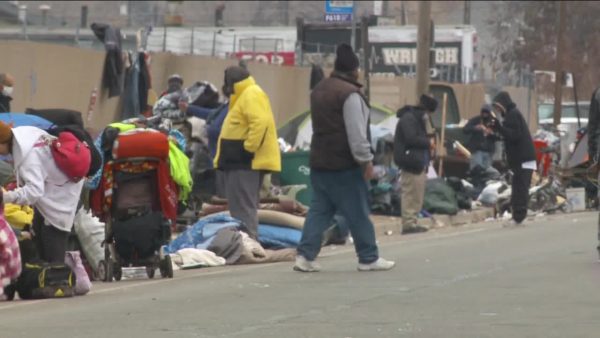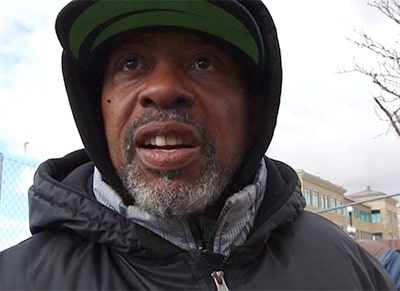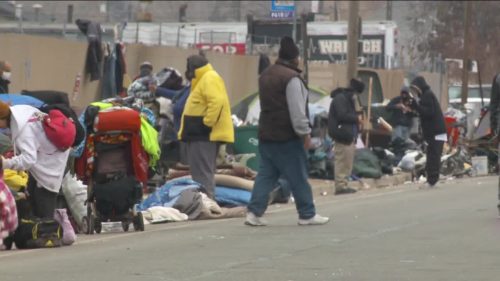
A look back at the last six years of Salt Lake City’s projects for handling chronic homelessness
Eric Vini, a working homeless man put it this way, “They will give another person a house that is not working, but a working person can’t get a house!” Vini added, “A person who is out here every day, can get a house, but a working person who is trying to be a productive citizen can’t get help!”
This is the unfortunate paradox of Utah’s current affordable housing crisis. Increasingly high rents have forced many of Utah’s working poor onto the streets. This is due to a massive shortage of affordable, and low-rent housing. Even while Salt Lake City and the greater Wasatch Front maintains a huge surplus of unfilled jobs, these jobs aren’t filled because there is a dearth of affordable housing, and the government keeps extending unemployment benefits.
“The solution” that Salt Lake City has maintained for the past four years has been what one retired police officer has described as the “putting your foot in the mud, the mud has to go somewhere.” He pointed out, “the homeless aren’t going away by closing homeless shelters or forcing them out. They have to go somewhere.”
The current method for solving the problems is called “homeless camp abatement.” A practice where the police and highway patrol show up and disperse homeless encampments, offering the homeless a 24-hour notice to take all of their belongings, anything remaining they haul away to the dump. This practice only causes the encampments to pop up in new locations. As a reporter who has been following the homeless situation in downtown Salt Lake City, I can’t help but remember how in 2015, Salt Lake City’s Ralph Becker was celebrating his ingenious “solution to chronic homelessness.” due to a highly unique program called “Housing First”.
Richard Markosian discussing with Anna Kasparian of The Young Turks the chronic homelessness in Salt Lake City.
Why Was Housing First A Failure?
Launched in 2016 by Utah’s appointed “Homeless Tzar” Lloyd Pendelton. The program that set out to “give homes to the homeless” was declared by the Washington Post, New Yorker Magazine, and NBC News and in a tongue-in-cheek manner by The Daily Show, “A solution to chronic homelessness.”
The solution is simple, said Pendelton in 2015, “We are giving homes to the homeless.” The program certainly alleviated chronic homelessness, it helped those who were willing to remain off drugs for a short period to get free housing, and it “saved the taxpayers millions.” According to all major news outlets. And the figures seemed to make sense. A chronically homeless person can cost taxpayers well over $100K, in emergency room visits and the “revolving door” of law enforcement and criminal justice time and money. A free home for the homeless costs taxpayers less than $35,000.
But due to a variety of factors including the unverified rumor that both Las Vegas and Los Angeles were offering their notorious “revolving-door criminals” a “free one-way ticket to Salt Lake City.” As one employee from Crossroads Urban Center told Utah Stories, the word got out nationwide, and as housing prices began escalating in 2017 Utah’s homeless population, in and around downtown Salt Lake City began surging.
The mainstream local media wasn’t asking why, and according to area police officers Mayor Ralph Becker was according to officers we spoke to in Pioneer Park, “spending more time in Washington D.C. than in Salt Lake City, and at odds with the Police Chief Chris Burbank.

But after there were two murders near Pioneer Park, in addition to the park being full of litter including used heroin needles, human feces and all sorts of clothing and debris, Salt Lake City began appearing like a third-world country. The homeless population in 2017 told Utah Stories that MRSA (a contagious staph infection) and body lice were spreading among the homeless population from sitting on park benches and spending time in the Rio Grande shelter. With drug deals occurring more frequently and blatantly out in the open and it became clear something had to be done to mitigate the problems, which is when the Utah State Legislature stepped in.
City and State leaders launched Operation Rio Grande. A $68 million effort to clean up the area by removing homeless encampments that had become out of control in Pioneer Park. The Housing First Initiative couldn’t keep up with the demand for housing. And most of the people Utah Stories spoke to in the fall of 2017, said they were attempting to “qualify for housing.” But many said they felt overwhelmed by the paperwork and hoops that they had to jump through to qualify– mainly in trying to prove that they had been long-term homeless, and that they were in recovery.
As Vini stated, this puts homeless advocates in a very difficult situation: Should Salt Lake City resources be rewarding the chronically homeless while punishing the working poor who are trying to get ahead through their efforts?
Read Part II to this story, Can tiny home communities solve the homeless and affordable housing crisis in Utah?
More on homelessness in Salt Lake:
No Hiding the Homeless: Pandemic pulls back the curtain on SLC homelessness
Homeless Millennials—Weighing In On Big Changes to City Programs
How Drug Addiction and Homelessness are Intertwined
Subscribe to Utah Stories weekly newsletter and get our stories directly to your inbox







